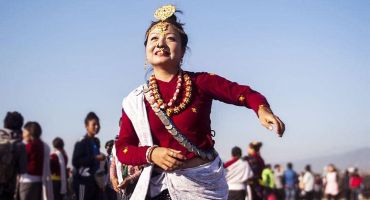In 1987, the International Labor Organization put up a report that provided the most accredited definition of indigenous tribal peoples. It said, “Indigenous peoples usually maintain a strong attachment to particular geographical locations and ancestral territorial origins. They typically seek to remain culturally, geographically, and institutionally distinct from the dominant society, resisting assimilation into the greater national society. In this way, they tend to preserve their own socio-cultural, economic and political ways of life.” This might be a generic statement considering that different tribes around the world, though similar, might exude different group behaviors but it is also partially true.
In a country like India which has the largest population of communities classified by the Government as tribal, the criteria to categorize a community as a tribe requires more than just the aforementioned description. Article 342 of the Indian Constitution provides for the specification of tribes or tribal communities or parts of or groups within tribes or tribal communities which are deemed to be for the purposes of the Constitution the Scheduled Tribes in relation to that State or Union Territory. For a community to be included as a scheduled tribe of India, it must have five characteristics.
- Primitive traits or way of life
- Geographical Isolation
- Shyness of Contact
- Distinctive Culture
- General/Economic Backwardness

A tribe is a group of people that is distinguished from other groups mainly through lifestyle, locations, values, and belief systems. Although basic attributes have been acknowledged, there can be no universal, generic, and absolute classification to define indigenous tribal people. However, there are certain parameters that can be accepted for a broader understanding or classification. There can be functional definitions that are balanced on foremost characteristics, such as those related to culture, languages, and beliefs, which provide a good practical basis for identifying the presence of “tribal traits” while also leaving categorization sufficiently wide to accommodate various socio-cultural disparities.
The challenges of classifying or categorizing communities into Castes and Tribes, differentiating them from the mainstream to the backward, are much greater in a country like India which has over 700 different tribes. The tribes in other parts of the world, especially in the West, are usually ethnically, socially, and culturally very different from the rest of their mainstream populace but in India, many tribes sometimes have broad connections with non-tribal communities. It is difficult to separate or classify populations because different communities have influenced each other over the centuries. Many tribal groups have also assimilated Hindu gods and goddesses in their religious beliefs because Hinduism is quite pluralistic in essence. Other tribes have gone on to embrace Buddhism and Christianity is predominant among a majority of tribes in the North East of India.

Such challenges also mean great variety and diversity that exist across regions and tribal groups. Therefore it is important to study the peculiarities and contextual characteristics of particular tribes, while also identifying and acknowledging their shared ethnicities and principles. A tribe should have some functional interdependence within the community. A tribe must have a sense of unity among themselves. They must follow a proper clan and lineage structure. British Anthropologist F.G Bailey says that a tribal community is one that is entirely segmentary in nature- a society based on lineage, that has equivalent parts held together by shared values. According to him, tribal people are also those who have control over natural resources.
Tribes also have a definite geographical and social region that they inhabit. They usually are seen living in remote corners, such as on hilly and forest areas. In Sikkim and Darjeeling, people mainly come across names of places such as Rai Gaon, Tamang Gaon, Lapchetar, Limbu Busti, Mangarjung, etc. This is all because tribal people share a definite common topography. Even in urban areas like Kathmandu, we can see this pattern replicating itself time and again. While the Rai people live mainly in Lalitpur, around regions like Talchikhel, Nakhipot, the Magars are abundantly found around Koteswor, and Gurungs live around Maharajgunj and Lazimpat. Living in this common topography is a trait that comes from instincts developed since ancient times while living as a tribe. This behavior not only hints at a need for a sense of unity but also shows the “Shyness of Contact” traits of a tribal community.

D N Mazumdar writes, “The concept of Tribe has further been defined as a social group with territorial affiliations, endogamous, with no specialization of functions, ruled by tribal officers, hereditary or otherwise, united in language or dialect.” While endogamy may not be prevalent among some tribes presently, it is usually preferred. Tribes are an integrated social organization that thrives on the basis of primary blood relationships. Cultural homogeneity is the main characteristic of a tribal community. This is not only the ‘shyness of contact’ trait but also fulfills the ‘primitive way of life’ classification.
A tribal society is also based on egalitarian principles. While all tribal people share common values, it also gives rise to a value system centered on equality. We find that among tribes, there are no institutionalized inequalities like the caste system or gender-based inequities. Thus men and women enjoy equal status and freedom. Tribes also understand the importance of kinship and share a common dialect which helps them feel united, safeguarded, and equal among themselves. This collective unity can be found in tribal communities in which people from a very young age are integrated into sturdy, cohesive bonds, which always continue to protect them in exchange for loyalty and ethnic values.





Leave a Reply